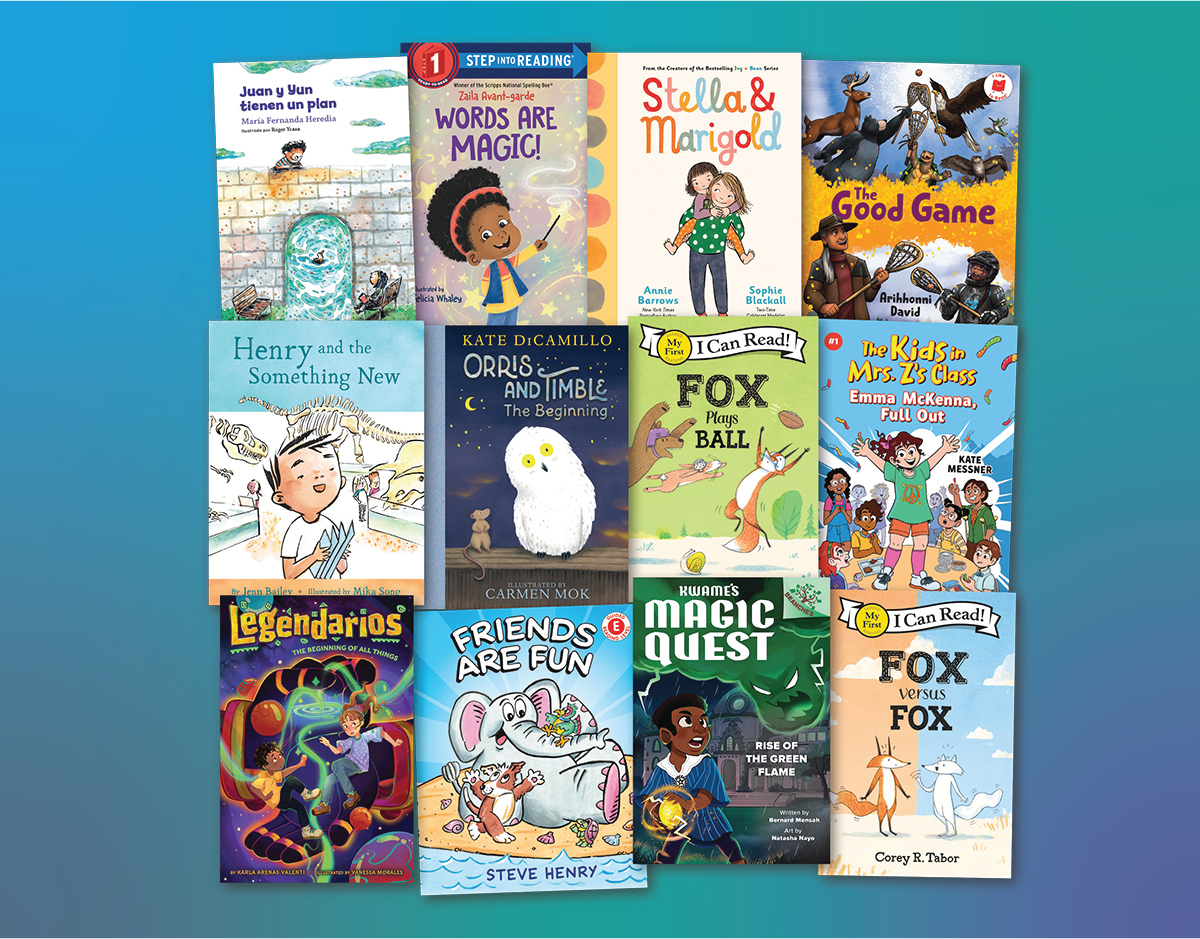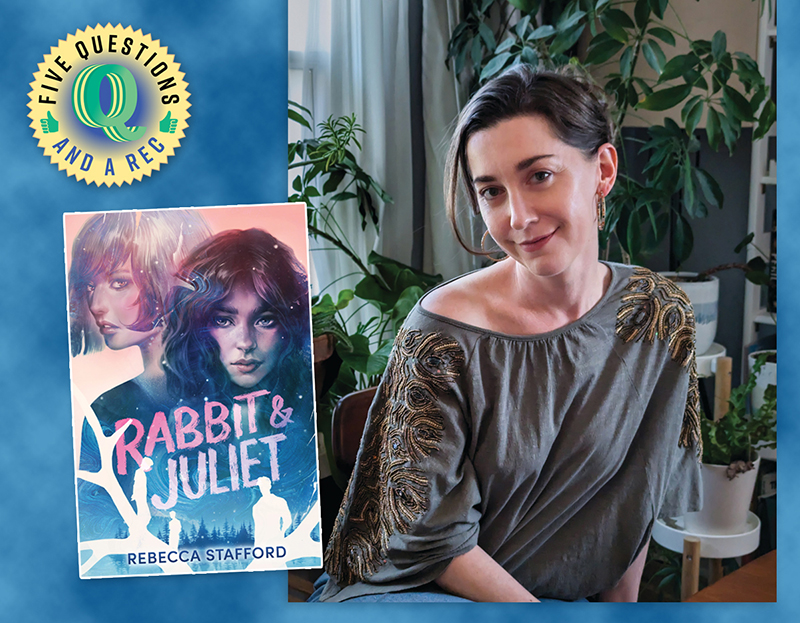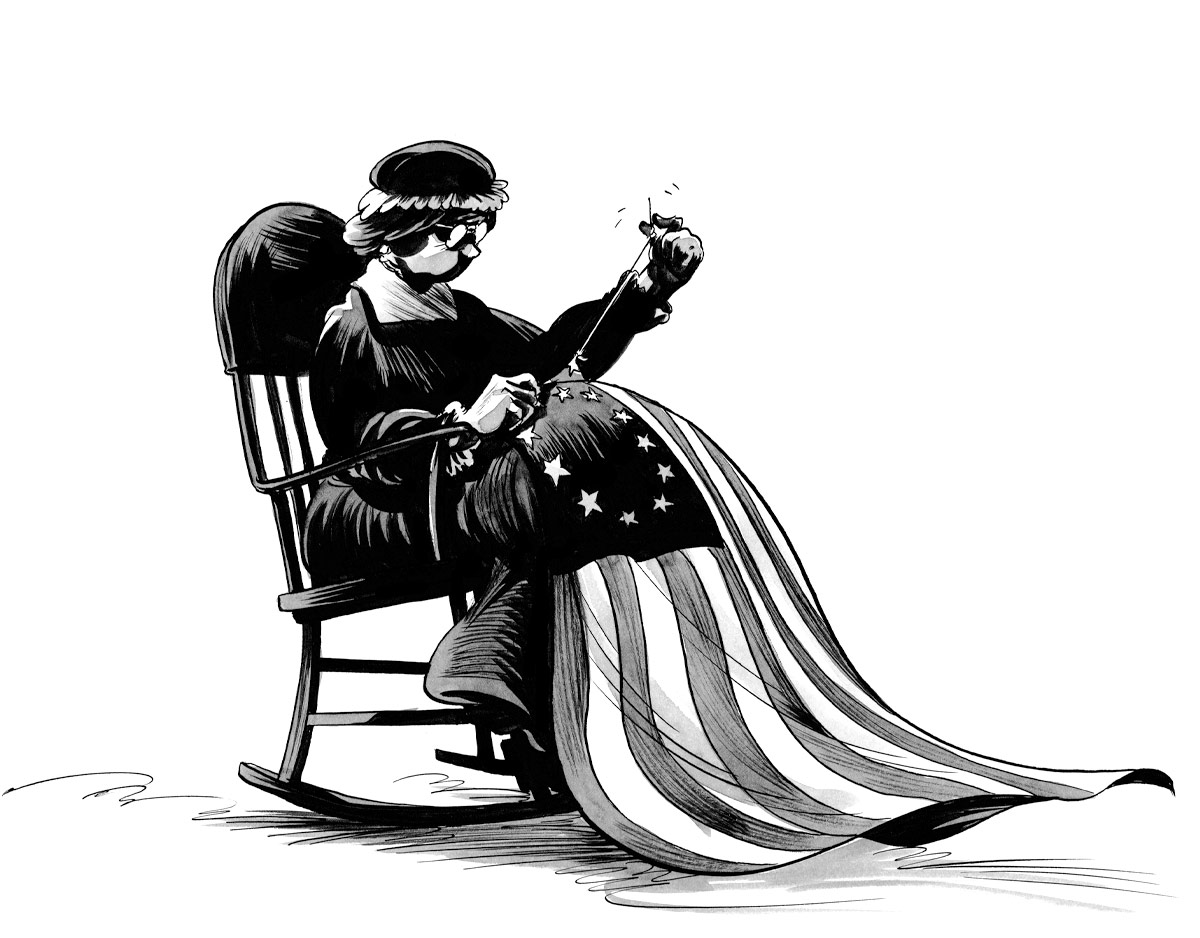31 Days, 31 Lists: 2021 Caldenotts

They’re beautiful. Sublime. True award-winner quality . . . and they’ll get bupkiss this year. I am referring, of course, to “Caldenotts”. Just as the award for the best illustrated book for children is awarded to Americans alone, so too must we sit back and watch as other beautiful titles fail to garner the appropriate attention simply because they don’t fit our criteria. With that in mind, I’ve gathered together a list of books that I believe could be true contenders if only they fell under our guidelines. Or, put another way, just think of some of this as a preview of the upcoming Translated Picture Books post. At least in some cases.
Here’s a refresher on the Caldecott Award’s criteria, just in case you wanted to jog your own memory.
The Capybaras by Alfredo Soderguit, translated by Elisa Amado [Translation – Spanish]

“No one knew them, no one expected them.” But when a family of capybaras comes to a farmyard for safety, they not only win the local chickens’ love but show them how to seek freedom. Who knew that if you just added capybaras to a book chock full o’ chickens you could come up with a pretty good story about prejudices and assumptions without a single anthropomorphized facial expression? Looks like this little Spanish import knows how to tell a tale with universal appeal. I keep thinking about how this is a pretty brilliant metaphor for how accepting immigrants can lead to a new understanding of your own oppressive government. Or am I reading too much into it? Dunno, but those hunters with the red caps sure look like MAGA guys to me. As for why it’s on today’s list, the black and white images paired with that singular red is striking, to say the least.
ADVERTISEMENT
ADVERTISEMENT
How to Find a Fox by Kate Gardner, ill. Ossi Saarinen




A book of pure photography has never won a Caldecott Award, but this one could have had a shot. Alas, photographer Ossi Saarinen is inconveniently Finnish. Breathtaking photography instructs young readers on where and how one might spot a fox in the wild. YES! This book shoots on all cylinders! The art here isn’t just beautiful. It illustrates the simple text well and is also just a ton of fun. It’s like the photographer knew how to shoot for a children’s book specifically. I loved the simple text for readalouds and younger kids, and the smaller more in-depth info on foxes and their lives. I think any kid who sees this title is going to be instantly obsessed with foxes for the rest of their natural born lives, so take that as a warning. This book is engrossing.
I Am the Subway by Kim Hyo-eun, translated by Deborah Smith [Translation – South Korean]

Wow. Apparently subway use is universal. And Kim Hyo-eun has managed to capture a beauty in it that one rarely finds in public transport. I mean, I’m sorry, but just look at that cover. Do you see how the light slants through the windows? The book captures that expression you put on your face when you travel by subway. It highlights characters that spend only the briefest amounts of time in one another’s presence before exiting into their own lives. There’s happiness and sadness here but it’s not a downer of a book. If anything it glorifies our existence by showing us at our most mundane. I utterly love this title and extra point to Deborah Smith’s translation. The book is told from the point of view of the subway itself and there’s this wistful melancholy to its voice that must have been so hard to capture in English. I love lines like “The sour smell of sweat on the long way home; a gentle afternoon light that washes over everything – old shoes, new shoes, clean and dull shoes. The unique lives of strangers you might never meet again.”
The Little Wooden Robot and the Log Princess by Tom Gauld
[Previously seen on the Funny List]



When a childless king and queen seek kids of their own, they end up with a wooden robot and a girl made from a log. And when tragedy places the siblings in danger, they’ll do anything they can to keep one another from harm. This was a surprise. I read a lot of random books during my lunch break, and normally I have a sense of whether or not they’ve garnered much buzz. I hadn’t heard boo about this book initially, so admittedly my expectations may have been lowered. Then, lo and behold, I read it and discovered that Tom Gauld has an ear for fairytales that I haven’t encountered in a very long time. This is so sweet and so funny and so very perfect in terms of tone that I’m just stunned. Then I flipped the book over to discover blurbs by Neil Gaiman, Oliver Jeffers, Jillian Tamaki, Jon Klassen, and Carson Ellis. Clearly I was late to the party. Alas, Gauld is a resident of London. So no Caldecotts for him.
Magic Candies by Heena Baek, translated by Sophie Bowman [Translation – South Korean]




When Tong Tong purchases a bag of strange round candies, he discovers that each one allows him to hear the hidden speech of someone or some thing. Marvelous models bring this kooky story to life. Lemme cut off those objections at the pass. The people in this book aren’t attractive? Who cares! I love their imperfections. The book is weird? No question! Strange and original and wonderful. I love books that use models and photography and this South Korean import is skilled in that department. The only reason I’m a little uncertain is when our hero apparently is talking to his dead grandma. Not sure what to make of that one. But the rest of it is really fun. I particularly love the message behind the dad’s haranguing. And I’ll be sure to treat my couch nicer from now on.
Midnight Fair by Gideon Sterer, ill. Mariachiara Di Giorgio




When the fair has closed and the night has come, what happens to the merry-go-rounds, rides, and games? Join a troop of intrepid animal adventurers in this beautifully rendered wordless romp. How strange is it that I’ve never seen an outdoor carnival represented accurately in a picture book before? This book is so evocative you can practically smell the popcorn and elephant ears. Sometimes wordless books require a lot of energy to read and understand. This one feels effortless. There are small storylines couched within larger ones. I could read and reread this hundreds of times and always find something new. Honestly, what it really reminded me of was Tuesday by David Wiesner with its surreal nighttime hijinks. My sole regret is that the illustrator lives in Rome and cannot win herself a Caldecott.
Moon Pops by Heena Baek, translated by Jieun Kier
[Translation – South Korean]

Generally I don’t like to include two of the same author on my lists, but for Heena Baek, recent winner of the Hans Christian Andersen Award, I will certainly make an exception. Though I saw Baek’s Magic Candies first in galley form, technically Moon Pops was the first brought to American shores. Here Baek uses a cut paper technique to relay her storytelling. And what storytelling it is too! When a night becomes so hot that the moon itself melts, Granny runs out, collects the drippings, and freezes them into delicious moon pops. That’s neat, but it’s the glimpses into people’s homes in this single apartment complex that blew my particular mind. You get all the voyeuristic thrill of Rear Window, peeking into the lives of these various clothed animals, with none of the murder. She’s even added some lights within the pops for an extra thrill. I was amused by a note at the beginning that was clearly put in there for American readers too. It explains that in Korean folklore it is said that you can look at the moon and see a rabbit there with a mortar and pestle. If you didn’t know that, the ending of this book would be a true headscratcher. Gorgeous.
My First Day by Phùng Nguyên Quang and Huynh Kim Liên

A child in Vietnam experiences an eventful journey down the Mekong River. Where is he going? What natural wonders (and dangers) will he encounter next? Visually riveting. This works. The illustrations are the first thing to blow you away (as you can probably tell from the cover) and I did feel a pang of worry that this would be all that the book is. But as I read on I discovered some really nice turns of phrase (example: “It’s different when you’re alone in the unfamiliar hallways of the forest”). And that’s even before I realized where the main character was heading. The art is lush and immersive, drawing you in. Would love to know who the translator of this book was (both the author and illustrator are Vietnamese), but no word on that (disappointing). Still, I often like to say that we get one truly great first day of school picture book every year. For 2021, it could be this book, but then I saw . . .
Never, Not Ever by Beatrice Alemagna, translated by Jill Davis
[Translation – French]

Every year I’m able to find one First Day of School book that really bowls me over. In the past that honor has fallen to School’s First Day of School, King of Kindergarten, and We Don’t Eat Our Classmates. This year, my heart was stolen by a naughty little bat in a penchant for pink. Her name is Pascaline and her response to her parents, upon being informed that she must attend school, is “Never, not ever.” When a particularly loud yelling of this phrase shrinks her parents down, she tucks them safely under her wings and is able to take them to school with her. What follows is a disappointing day for Pascaline as she comes to realize that it would be much more fun at school by herself than having to cater to two tiny, naughty parental units. It’s such a bold, ridiculous premise that it works fantastically, and no one can top Alemagna when it comes to petulant bat eyelids. My sole regret? That I don’t have a kid of my own going to a first day of Kindergarten anymore. I’d love to read them this.
Nobody Owns the Moon by Tohby Riddle

It’s always kind of awkward including imports on this list that were published years and years ago in their home countries. This little number came out a whopping 13 years ago in Australia. But considering how good it is, I’m just grateful we got it here in the States at all. The story tells you in a straightforward manner that only a few wild creatures can successfully make a home in the city. The fox is one of them, and we get a great look at Clive the fox reclining in an armchair with a view of what looks to be NYC outside (the Australians love to depict Manhattan, as evidenced by this and Gus Gordon’s fabulous Herman and Rosie). The fox moves about its daily life, much like the dinosaur in Sean Rubin’s Bolivar (another book this would pair well with) but his friend Humphrey has it harder. With great delicacy the text notes that “Humphrey doesn’t always have a fixed address,” and holding down a job can be hard for him. On a day when Humphrey looks a little worse for wear Clive notices that there’s a fancy invitation in Humphrey’s bag. He was going to eat it (“But if you’re hungry, Clive, it’s yours”) but his friend opens it to find two free tickets a new play premiering that night. They attend and get free hors d’oevres, punch, and a show that is absolutely fantastic. Afterwards their tickets entitle them to “a hot beverage of their choice and a large slice of cake.” Coming out, the city is bright and glittering and full and Humphrey declares, “This is our town!” There is no solution for Humphrey’s other problems. Clive doesn’t come to his rescue to let him stay with him. It’s just a single wonderful night in a city they both enjoy. And like the play they’ve just seen, it has a bittersweet ending. I don’t keep a lot of the picture books that land on my desk, but this one I’m keeping for a long long time.
Olwen Finds Her Wings by Nora Surojegin, ill. Pirkko-Liisa Surojegin [Translation – Finnish]

Boy, they’re not advertising that this is a Finnish title much, I gotta say. No word on who the translator is (if there is one) but this is just one of the loveliest little books I’ve seen this year, that’s for sure. The plot is rote. Baby owl doesn’t know what it’s good at and attempts to mimic a hare, a bear, and a squirrel by turns. Then, at last, mama shows that the thing she’s good at, after all this, is flying. The art, though. Man. No one makes a petulant owl better than Pirkko-Liisa Surojegin. I was hooked from the moment I saw its bored little face as it sat in a tree. These aren’t screech owls but they’re not far off. Surojegin’s linework is just so incredibly delicate. Occasionally you’ll catch glimpses of her signature in the lower right-hand corners of each piece, which isn’t something you see often these days. I also cannot even fathom how hard it is to draw fluffy snow falling. Textures and expressions are the name of the game with this book, and while kids are going to identify like crazy with Olwen, I spent an inordinate amount of time trying to identify the pinecones and critters on display. Definitely one of the best winter set picture books of 2021.
On the Trapline by David A. Robertson, ill. Julie Flett

ADVERTISEMENT
ADVERTISEMENT
See that medal on the cover? That’s the Governor General’s Award. It’s the Canadian Caldecott equivalent and this book is its most recent winner. A trip with his grandpa to see the trapline, a place where he once hunted, takes a child into the heart of his family’s history. Flett’s art is always subtle and beautiful, but it was Mr. Robertson’s word choices that got me to thinking. This book is about as much of what we say as what we don’t say to our children. The grandfather in this book is clearly protecting his grandchild, but is still answering questions about his past. I was particularly impressed by the way in which the Swampy Cree vocabulary words aren’t just inserted into the text, but carry some of the load of the storytelling. They advance the plot, the way a song does in a musical.
Once Upon a Time There Was and Will Be So Much More by Johanna Schaible
[Translation-Swedish]

I’ll confess that I knew that this book was an import when first I saw it. Why? Because it feels like a Bruno Munari redux, baby! Essentially, Schaible is doing something particularly keen and original with this title. This is a book that pulls back right at the start, zooms in, and then pulls back again. The first page shows the early Earth. “Billions of years ago, land took shape.”. We have this gorgeous spread of thick paints that look like volcanic rocks as well as the splatter of lava as it surges on the page. These acrylics, mixed with a cut paper technique, are truly beautiful, evocative of Ed Young. But what’s cool is that as you turn the pages the time period shrinks. Now we look at images from “millions of years ago”. Then it’s “hundreds of thousands”, right on down until you get to “A minute ago” and then “Now!”. As the time shrinks, so too do the pages. Then (and this is particularly cool) it expands. We look to the future. To a minute from now, a day, a week, a year. And the pages expand as well until the child reader is asked to consider what it is that they’ll look back on when they’re old. “What do you wish for the future?” We don’t always expect our books to become quite so philosophical and vast. This one is a wonder that makes you wonder.
The Volume by Luis Camnitzer

Okay, I know what you’re thinking here. You’re thinking, “Betsy? Are you seriously promoting a children’s picture book with a gray cloth cover and the unironic title ‘The Volume’?” Yeah yeah yeah, I know. On the outside this almost looks like a parody of a pretentious children’s book. You half expect to see it propped up in some fancy museum gift shop where fashionable grandparents purchase it for the grandchildren they never bother to see in person. So maybe my expectations were exceedingly low when I read this. But truth be told, I really got into this. It started out like one of those simplified looks at the beginning of life (see: the previous book on today’s list), and then deepened into something a lot more interesting and intelligent and strange. You see, this is a book that begins with a colorful scribble representing The Big Bang. What you are left with afterwards is a dot on a page. The dot explores the confines of its space, then explores its own potential. One dot becomes two. Two become four. Four multiply until the dots become a line. The line itself replicates and becomes a sheet. The sheets multiple and become three-dimensional and a volume. But it doesn’t stop there. For all that this is Camnitzer’s first book for kids, his language is keen. He’s not talking down to his readership, but neither is he treating them like small adults. This is a fable, pure and simple, and fables (as I am sure you’ve discovered) are almost impossible to do well. This is a book that I will actually be keeping for myself. And let me tell you, that happens with few books in a given year these days. Doesn’t matter. I know there’s a message here. If I just reread the book a couple times to my kids, I’m bound to figure out what it is.
When I See Red by Britta Teckentrup

This is sort of what you’d get if you took When Sophie Gets Angry… Really Really Angry and then cranked up the messaging to extend beyond mere personal anger. Teckentrup’s little girl is filled with rage. We don’t know the cause but we do know that this isn’t the kind of anger that fades right away. She writes, “I’m blinded by fury. I’m furiously mad. But I can see clearly that change is ahead!” The anger calls forth monsters. It whips up hurricanes. This is a rage that is full command of itself. Not a temper tantrum but a righteous anger that gives her power and keeps her safe. There is a quote at the end of the book from Anni Lanz, a Swiss human rights activist, that says, “Use your anger to transform the world around you.” On top of that, the art is stunning. It’s a real shame that imports don’t tend to tell us the medium in which their artists were working. Teckentrup here looks like nothing so much as Eric Carle speeding down the highway at 180. And can I just get nerdy on the typography for a second, because whoever did it did a REALLY good job! That font changes perfectly in tandem with the book every time it appears. It’s just gorgeous. A marvelous response to an unjust world.
Interested in previous years and their Caldenotts? Then take a gander at these:
And here’s what else is on the docket this month:
December 1 – Great Board Books
December 2 – Board Book Reprints & Adaptations
December 3 – Transcendent Holiday Picture Books
December 4 – Picture Book Readalouds
December 5 – Rhyming Picture Books
December 6 – Funny Picture Books
December 7 – CaldeNotts
December 8 – Picture Book Reprints
December 9 – Math Books for Kids
December 10 – Books with a Message
December 11 – Fabulous Photography
December 12 – Wordless Picture Books
December 13 – Translated Titles
December 14 – Fairy Tales / Folktales / Religious Tales
December 15 – Unconventional Children’s Books
December 16 – Middle Grade Novels
December 17 – Poetry Books
December 18 – Easy Books & Early Chapter Books
December 19 – Older Funny Books
December 20 – Science Fiction Books
December 21 – Fantasy Books
December 22 – Informational Fiction
December 23 – American History
December 24 – Science & Nature Books
December 25 – Autobiographies *NEW TOPIC!*
December 26 – Biographies
December 27 – Nonfiction Books for Older Readers
December 28 – Nonfiction Picture Books
December 29 – Best Audiobooks for Kids
December 30 – Comics & Graphic Novels
December 31 – Picture Books
Filed under: 31 Days 31 Lists, Best Books, Best Books of 2021, Booklists
About Betsy Bird
Betsy Bird is currently the Collection Development Manager of the Evanston Public Library system and a former Materials Specialist for New York Public Library. She has served on Newbery, written for Horn Book, and has done other lovely little things that she'd love to tell you about but that she's sure you'd find more interesting to hear of in person. Her opinions are her own and do not reflect those of EPL, SLJ, or any of the other acronyms you might be able to name. Follow her on Twitter: @fuseeight.
ADVERTISEMENT
ADVERTISEMENT
SLJ Blog Network
One Star Review, Guess Who? (#211)
Kevin McCloskey on ‘Lefty’ | Review and Drawn Response
Notable NON-Newbery Winners: Waiting for Gold?
The Seven Bills That Will Safeguard the Future of School Librarianship
Take Five: Newbery Picks, Part Two
Gayle Forman Visits The Yarn!
ADVERTISEMENT








I had the same thoughts about how I wished The Midnight Fair was eligible for Caldecott. It’s just gorgeous and such a fun wordless book.
Someone suggested renaming the Caldecott for Jerry Pinkney. I say let’s really confuse everyone and name an no-Americans Allowed award for picture book illustrations for an American and give it Pinkney’s name while Caldecott, who was never an American keeps his award tidily what people expect.
You, my friend, enjoy playing with fire.
This is brilliant, BB. Loving it/them.